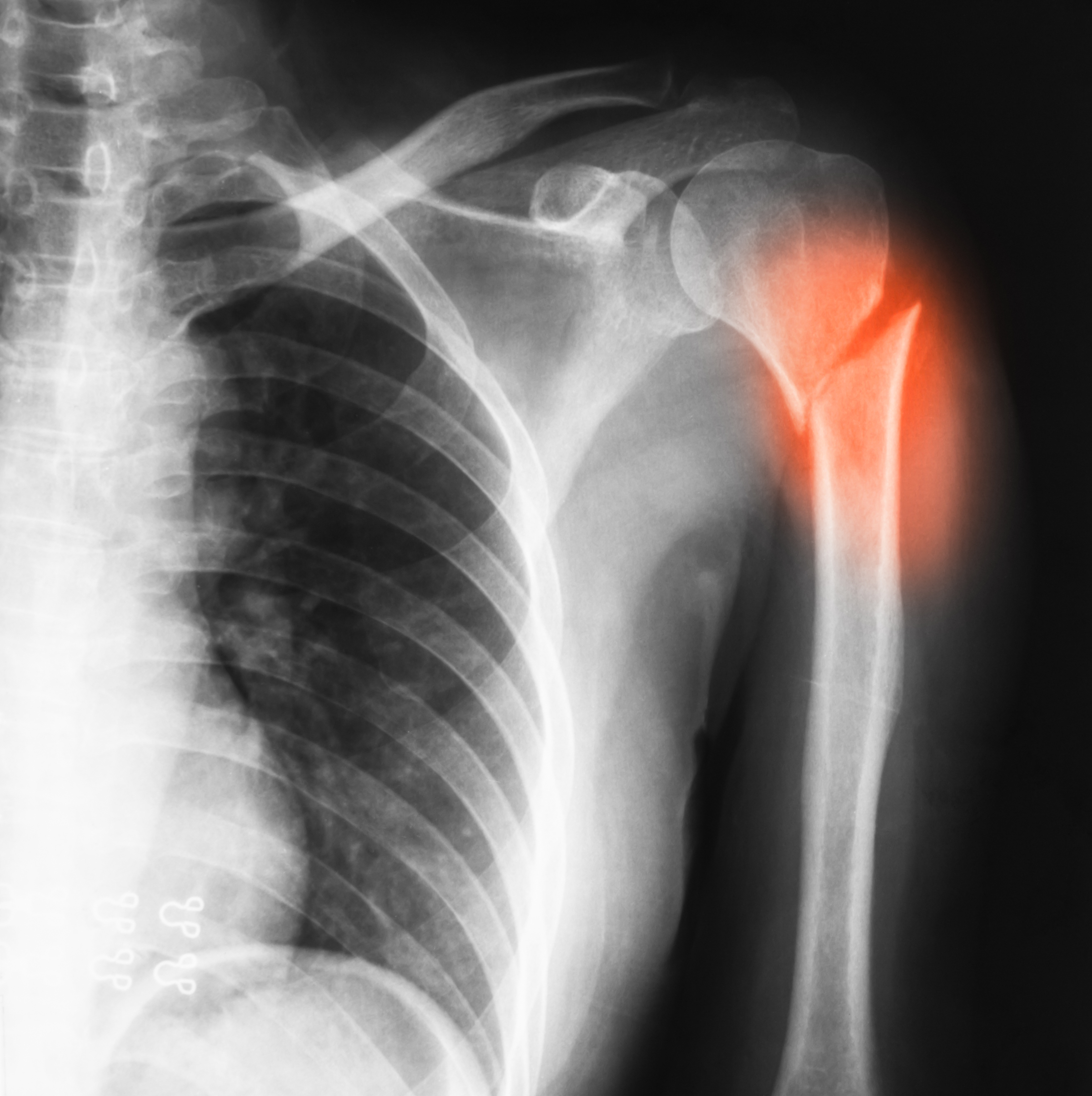
Common causes of proximal humerus fractures
A fracture to the top of the upper arm bone (humerus) can have severe consequences for patients, especially those who are physically active for work or leisure. There can be a number of factors that can contribute to a fracture of the humerus. Being aware of what causes these injuries helps medical professionals deliver better lasting quality of care and improve patient experience. You can find this information further down in the post.
What is a proximal humerus fracture?
Proximal humerus fractures involve the top end of the upper arm bone. This bone runs from the should down to the elbow joint. As a result, it is crucial for many regular arm movements such as opening doors. A proximal humerus fracture can occur in many different forms, with the most common being either a simple or comminuted fracture. Although these fractures can also be classified by the shape or angle of the break, including:
- Transverse fracture.
- Buckle fracture.
- Oblique fracture.
- Segmental fracture.
- Hairline fracture.
- Spiral fracture.
For more detail on how these types of fracture differ, read ‘What’s the difference between a comminuted fracture and a transverse fracture?’.
What commonly causes humerus fracture?
There are a range of factors which can either directly or indirectly contribute to a humerus fracture. Certain causes are more likely to lead to a certain type of fracture, which in turn requires different treatment for proper healing. Knowledge of how a fracture has occurred is useful for planning an osteotomy operation.
Fall
Falling unexpectedly onto an outstretched arm, even from ground level, can result in a humerus fracture. This is a very common cause of upper extremity fracture, as our instinct is always to try and cushion our fall. Older patients or patients that regularly engage in strenuous physical activity are more likely to experience a fall which could risk fracture in the arm.
Accident or injury
An event that causes direct force or pressure to be applied to the shoulder and upper arm can result in a proximal humerus fracture. Examples include car crashes and high-impact sports injuries. The bigger the force, the larger and more complex the fracture is likely to be.
Repetitive stress
Any kind of repetitive motion that places stress on bones can make the individual more susceptible to a fracture. This is because there isn’t adequate time for the body to replace the cells. For humerus fractures, this is commonly caused by weightlifting and sports such as tennis.
Conditions
There are numerous conditions which have the side effect of weakening bones in certain parts of the body. For instance, a metabolic bone disease or bone cysts located around the scapula and upper arm.
Osteoporosis
This condition decreases bone density, resulting in weakness. Individuals with osteoporosis, especially those who have had it for an extended period of time, can suffer a fracture from even a small fall or low-impact trauma event.
Bone tumours
In rare cases, tumours on the bone itself can compromise the strength of the bone and leave it more prone to fracture. It may be necessary to treat the tumours at the same time as the fracture in order to help prevent re-fracture.
Orthopaedic products for fracture fixation
Proximal fractures of the humerus that require internal fixation and reduction must be treated with the appropriate systems. The first step in diagnosing fractures and creating a treatment plan is to investigate the injury site. The L3D Osteotomy Planning and scanning system allows for accurate mapping of internal bone structures. It then analyses the CT scan data to create virtual and physical models for pre-surgical planning. Surgeons can use these models to determine drilling locations and practice cuts ahead of time, serving as specific guides for a patient’s anatomy.
When it comes to fixing the fracture, the PANTERA Proximal Humerus Plate System is a market leading product with advanced options for cross screw fixation and the ability to achieve lesser tuberosity. Proximal humerus plate fixation using this product has been proven to be effective at anatomically reducing and stabilising the humeral head complex. The locking plate design then facilitates regular healing.
Your trusted UK orthopaedic distributor
At LEDA Orthopaedics, we understand the priorities and challenges faced in the medical sector. That’s why we’ve sought to streamline the process of acquiring products for orthopaedic surgeries by including both the system and the relevant instrumentation. This enables practitioners to deliver effective surgical treatment and high quality of care. If you have any questions regarding our elbow & shoulder products, contact LEDA and make an enquiry.